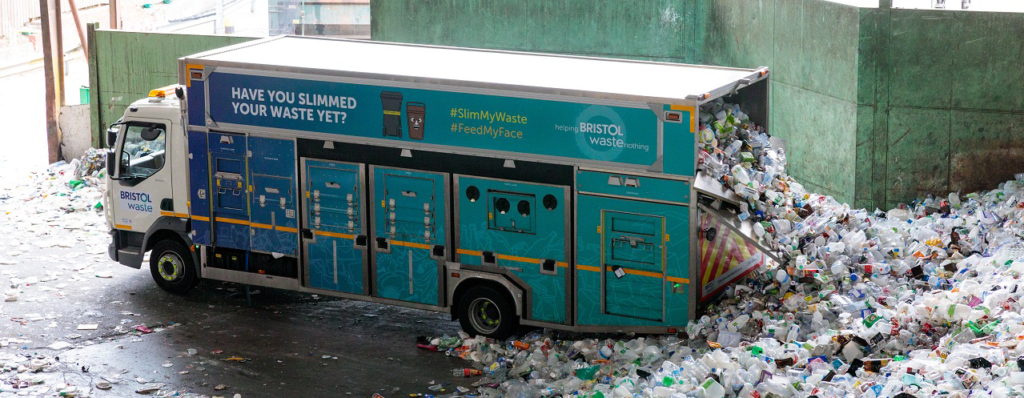The European Commission has confirmed that commingled collectionswill beallowed under the revised Waste Framework Directive, provided high quality is achieved.
In long-awaited guidance published on Thursday (June 21) which will inform how the legislation is implemented in the UK, the Commission said that commingled collections can count towards the Directive’s requirement for member states to introduce separate collections of paper, metals, glass and plastics by 2015 provided they generatesimilar quality.

Although not legally binding,the guidancebacks up the stance taken by Defra and the Welsh Government in seeking to allow commingling. It is expected pave the way for the governments to publish their amended Waste (England and Wales) Regulations 2011 in the coming weeks alongside UK-specific guidance.
The Commission has in the past indicated that commingled collectionsareacceptable under the Directive, if high quality recycling is achieved (see letsrecycle.com story).
Timing
The timing of the publication is particularly pertinent as the governments interpretation of the Directive is the subject of a Judicial Review brought by six members of the Campaign for Real Recycling. Originally scheduled for December 2011, the Judicial Review was set to restart on June 13 2012 but Defra and the Welsh Government were granted a six week extension in order to finalise their position before parliamentary recess on July 17 (see letsrecycle.com story) .
Writing in the introduction to the guidance, entitled ‘Guidance on the interpretation of key provisions of Directive 2008/98/EC on waste’, director-general at DG Environment, Karl Falkenberg, said: Since the date of application of the Waste Framework Directive, many questions regarding its interpretation have been raised by national authorities and stakeholders.
“If subsequent separation can achieve high quality recycling similar to that achieved with separate collection, then co-mingling would be in line with Article 11 WDF and the principles of the waste hierarchy”
European Commission
This guidance document is intended to assist both national authorities and economic operators with the aforementioned legislation.
Guidance
In the guidance, the Commission explains that Member States are required under the rWFD to introduce at least separate collections of paper, metal, plastic and glass by 2015 provided it is necessary and technically, environmentally and economically practicable.
The Commission acknowledges that the rWFD does notexplicityly refer tocommingled collections. However, because separate collections are only required where necessary and the aim of separate collection is high quality recycling, it says that commingled collections will be allowed where the same quality can be achieved.
The details are given in the following four crucial paragraphs:
As a starting point, it should be borne in mind that in accordance with Article 11(1) paragraph 3 WDF, and subject to the conditions set out in this provision, there is an obligation to have in place by 2015 separate collections for paper, metal, plastic and glass. Separate collection is defined as waste-specific separate collection.
On the other hand, setting up a separate collection is also subject to the principle of proportionality (subject to Article 10(2) WFD; necessity and technical, environmental and economic practicability). Considering that the aim of a separate collection system is high-quality recycling, the introduction of a separate collection system is not necessary if the aim of high-quality recycling can be achieved just as well with a form of commingled collection.

So, co-mingled collection of more than one single waste streams may be accepted as meeting the requirement for separate collection, but the benchmark of high quality recycling of separately collected single waste streams has to be examined; if subsequent separation can achieve high quality recycling similar to that achieved with separate collection, then co-mingling would be in line with Article 11 WDF and the principles of the waste hierarchy.
It continues: Practically, this usually excludes co-mingled collection of bio-waste and other wet waste fractions with dry fractions such as eg paper. On the other hand, subject to available separation technology, the co-mingled collection of certain dry recyclables (eg metal and plastic) should be possible, if these materials are being separated to high quality standards in a subsequent treatment process.
TEEP
The guidance also offers some explanation of what technically, environmentally and economically practicable’ (TEEP)means as used in Articles 10 and 11 of the rWFD.
It says: Technically practicable means that the separate collection may be implemented through a system which has been technically developed and proven to function in practice. Environmentally practicable should be understood such that the added value of ecological benefits justify possible negative environmental effects of the separate collection (eg additional emissions from transport). Economically practicable refers to a separate collection which does not cause excessive costs in comparison with the treatment of a non separated waste stream, considering the added value of recovery and recycling and the principle of proportionality.
Quality
The guidance will come to a relief to many local authorities and waste management companies who have invested heavily in commingled collection systems and materials recycling facilities (MRFs). But, it also highlights the need to improve the quality of the materials collected, which is sometimes poor.
Related Links
Earlier this month, Defra minister Lord Taylor said that the government would be launching a consultation on a compulsory MRF code of practice in August 2012 (see letsrecycle.com story) . The code is due to come into force in April 2014 and has been developed in partnership with industry to drive quality recycling. A Defra Action Plan on Quality is also being developed.
Elsewhere in the guidance,the Commission provides clarification on issues including: the concept of End-of-Waste, waste hierarchy (see letsrecycle.com story) definitions of waste and waste prevention, the ban on the mixing of hazardous waste; and, Best Available Techniques (BAT).








Subscribe for free